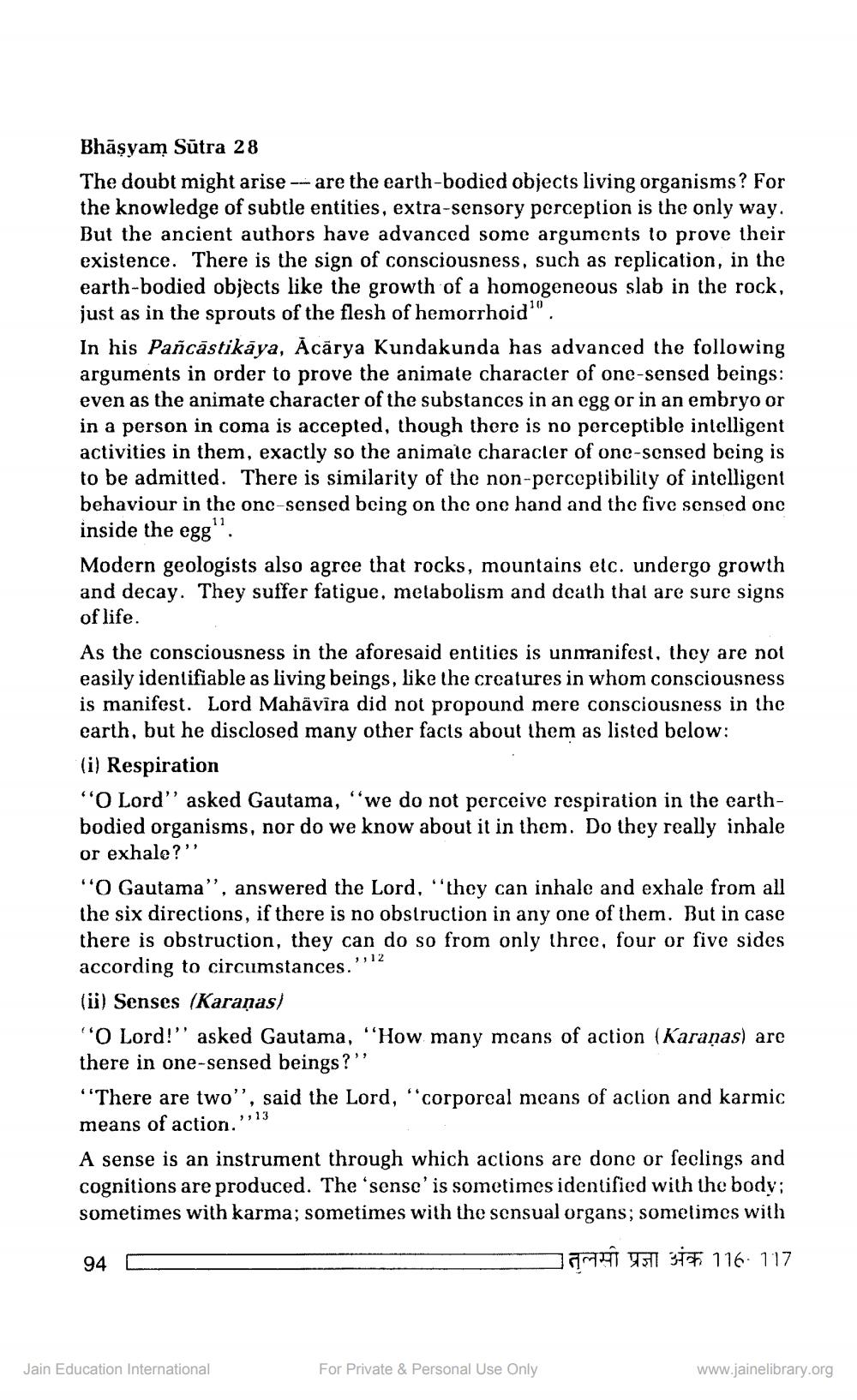________________
Bhāṣyam Sutra 28
The doubt might arise are the earth-bodied objects living organisms? For the knowledge of subtle entities, extra-sensory perception is the only way. But the ancient authors have advanced some arguments to prove their existence. There is the sign of consciousness, such as replication, in the earth-bodied objects like the growth of a homogeneous slab in the rock, just as in the sprouts of the flesh of hemorrhoid1".
In his Pañcāstikāya, Acārya Kundakunda has advanced the following arguments in order to prove the animate character of one-sensed beings: even as the animate character of the substances in an egg or in an embryo or in a person in coma is accepted, though there is no perceptible intelligent activities in them, exactly so the animate character of one-sensed being is to be admitted. There is similarity of the non-perceptibility of intelligent behaviour in the one-sensed being on the one hand and the five sensed onc inside the egg11.
11
Modern geologists also agree that rocks, mountains etc. undergo growth and decay. They suffer fatigue, metabolism and death that are sure signs of life.
As the consciousness in the aforesaid entities is unmanifest, they are not easily identifiable as living beings, like the creatures in whom consciousness is manifest. Lord Mahavira did not propound mere consciousness in the earth, but he disclosed many other facts about them as listed below:
(i) Respiration
"O Lord" asked Gautama, "we do not perceive respiration in the earthbodied organisms, nor do we know about it in them. Do they really inhale or exhale?"
"O Gautama", answered the Lord, "they can inhale and exhale from all the six directions, if there is no obstruction in any one of them. But in case there is obstruction, they can do so from only three, four or five sides according to circumstances.'
,,12
(ii) Senses (Karaṇas)
"O Lord!" asked Gautama, "How many means of action (Karaṇas) are there in one-sensed beings?"
"There are two", said the Lord, "corporeal means of action and karmic means of action.
,,13
A sense is an instrument through which actions are done or feelings and cognitions are produced. The 'sense' is sometimes identified with the body; sometimes with karma; sometimes with the sensual organs; sometimes with
तुलसी प्रज्ञा अंक 116-117
94
Jain Education International
For Private & Personal Use Only
www.jainelibrary.org




